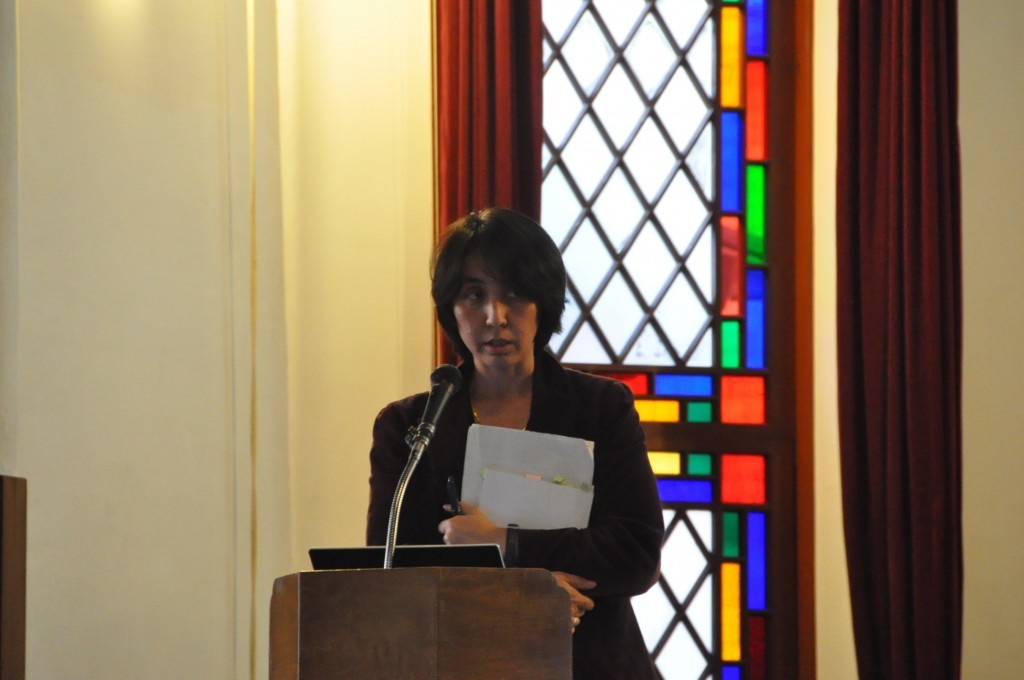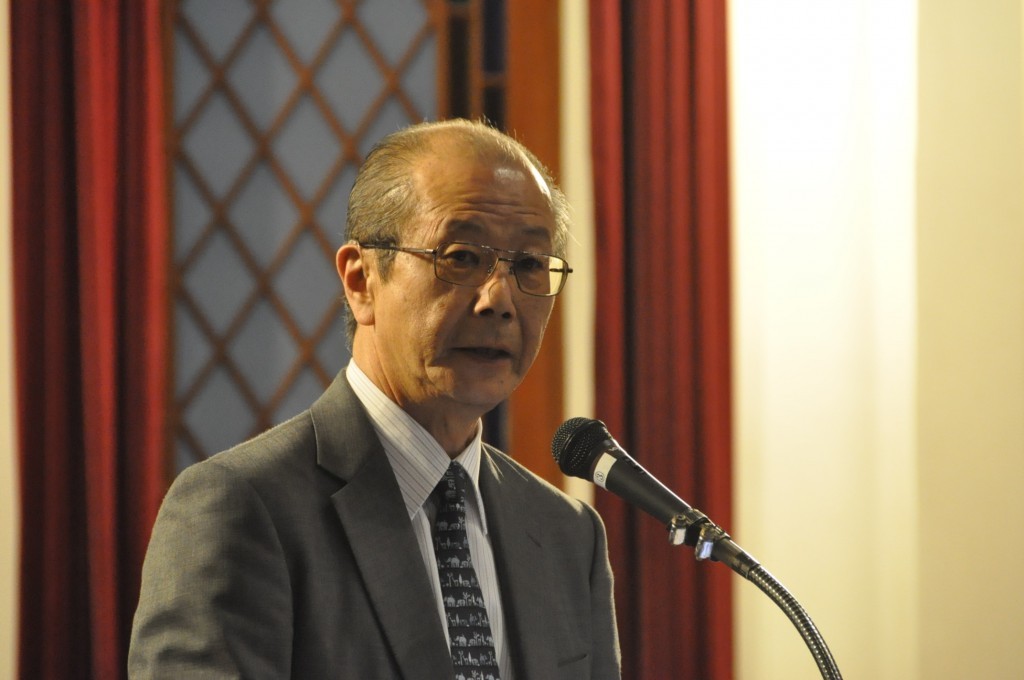Center for Interdisciplinary Study of Monotheistic Religions(CISMOR)Doshisha University
> Public Lectures > The inside of Chinese SocietyPublic Lectures
The inside of Chinese Society
| Date: |
2015/10/23 16:40-18:30 |
|---|---|
| Place: | Doshisha chapel, Imadegawa Campus, Doshisha University |
| Lecture: |
Liulan Wang (Associate Professor, Kyoto Universtiy) Commentator: Makoto Hara (Professor, Doshisha University) |
| Summary: | |
|
Dr. Wang delivered a lecture concerning the Chinese in Kobe and the formation of the Christian community there. Since the opening of Kobe Port to foreign ships, the Chinese has been a long history of merchant activity there. Overseas Chinese regard their roots as being important; from a religious viewpoint, ancestor worship, Daoism, and mausoleums sacred to the memory of Guan Yu or Confucius have been passed down to the next generation. Thus, a society based on blood and territorial relationships has formed the core of the overseas Chinese. For this reason, Christianity among overseas Chinese in Japan has not been visible in previous studies; however, in the Chinese community in Kobe, there has also been a Christian church (Kobe Chinese Reformed Presbyterian Church). This church began in 1949, when American Southern Presbyterian Church missionary Wilfred McLauchlin, responding to the change in regime in China, founded the church for overseas Chinese when he visited a port in Kobe en route home to the US. In 1952, the Chinese Presbyterian Church was founded as the first church for Chinese people in Kobe. At first, overseas Chinese, who placed importance on ancestor worship, etc., knew very little about Christianity, and it was no easy task to actively win converts in places where they congregated. However, by being exposed to evangelistic efforts, some successful, wealthy Chinese men, who had no prior interest in religion, became baptized along with their wives and children. Currently, flexibility in succession can be observed; unlike ancestral worship, which places importance on patrilineage, in the converted generation, daughters may serve as church elders, etc. Furthermore, following the construction of houses of worship and the establishment of preschools led by white missionaries, the church has been led by Chinese people since the 1960s, in the wake of pastors from Taiwan being invited. One of the reforms was the emphasis on conducting worship services in the mother tongue of the congregation. Japanese services were added as the number of second-generation Chinese believers who did not understand Mandarin or Taiwanese increased. Following this, in 1978, hymns were published in four languages (Mandarin, Taiwanese, Japanese, and English), and later editions are still currently in use. However, people of Chinese descent, including those who have naturalized, comprise the core of the organizational structure, such as elders and deacons. During the 1960s, the Asian missionary district of the American Presbyterian Church requested the church not to be an independent Taiwanese church, but to join in the United Church of Christ Japan. However, the Taiwanese pastors who were invited and the congregations of the Chinese churches in Osaka and Kyoto were adamantly opposed to the idea and formulated plans to open the church to not only Chinese people but also to Japanese and other foreign people. The church’s name was subsequently changed to the Kobe Chinese Reformed Presbyterian Church in 1973. In Japanese, the “Chinese” in the name was replaced with the geographical location of “Kobe.” In essence, the name now stresses geographical location rather than ethnicity, reflecting an attempt at open mission. Furthermore, the church cemetery was established in a different location from the existing cemetery for overseas Chinese (Chuka Giso). Thus, although Chinese, the church intentionally elected to create its own religion and community. Among the congregation, there are those who overcame conflict and broke with the faith of their ancestors, such as the wealthy woman of Chinese descent who was born in Japan and converted following the death of her husband, despite opposition from family members, and Chinese students who select a new faith in an environment different from that of their parents in response to the political changes that occurred since the reform and opening up of China in the 1980s. Currently, there is a need for a pastor who can speak both Mandarin and Japanese, and the procurement of such a pastor has become very difficult. The absence of a pastor to support the church has been a major issue, reflecting the difficulties faced by a community of immigrants in a foreign country to maintain their faith. Moreover, in the Chinese church in Kobe, the pastors and church maintain the Presbyterian denomination, but in some cases, the believers are not necessarily bound to any sect, but rather select the church as a Chinese church in which they can communicate in their mother tongue, having Mandarin as a base. However, even if the language is understood, because the religious backgrounds and origins of the believers widely vary, there is a gap between the examples used in the pastor’s sermons and the actual experiences of the believers. There are also various other issues such as securing the financial base of the church as an independent organization, differences between the Chinese and Japanese church systems, and difficulties and conflicts regarding religious succession within families, etc. Furthermore, although Taiwanese, Chinese, and Japanese believers belong to the same church, their social relationships, including political positions, etc., are not monolithic, and there has been a struggle to steer towards the maintenance and the development of the Chinese church as a holy place while experiences compromise and conflict with the secular world. She concluded the lecture by observing that the multi-layered composition of believers in this church reflects the various issues surrounding a community of believers that is formed by immigrants, giving us a viewpoint to comparatively study immigrants in other regions and Chinese Christian societies other than in Kobe. Following the lecture, Prof. Hara gave his comments, and a question and answer session was conducted for the participants. Tomoki Asaka Postdoctral Fellow, CISMOR |
|

